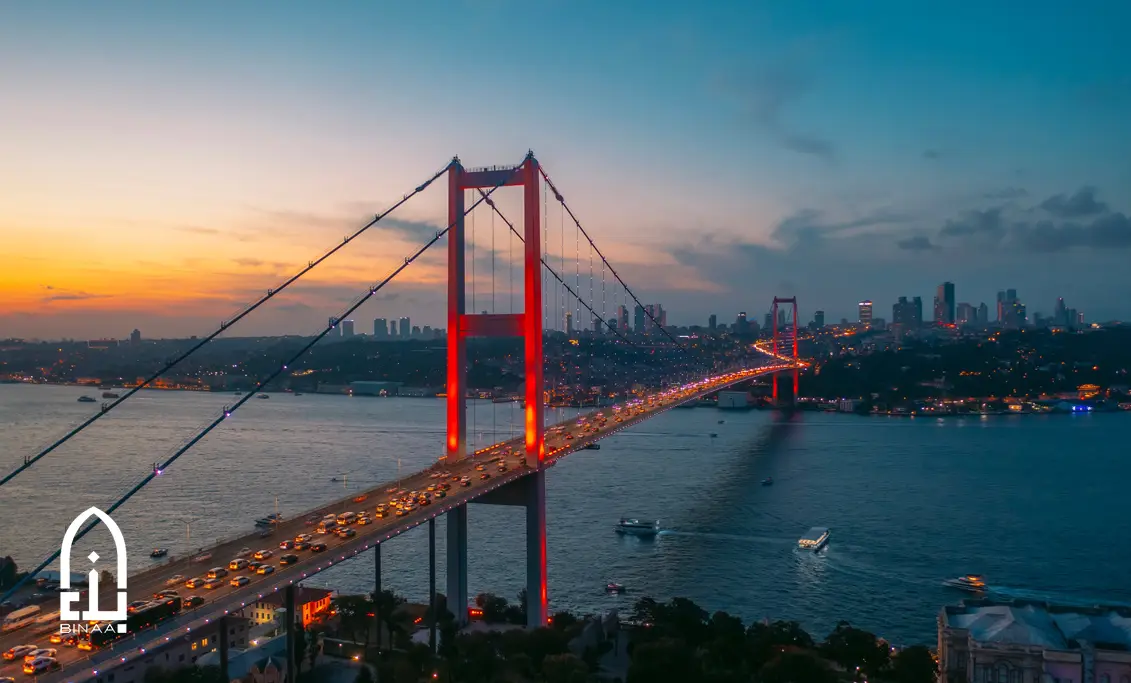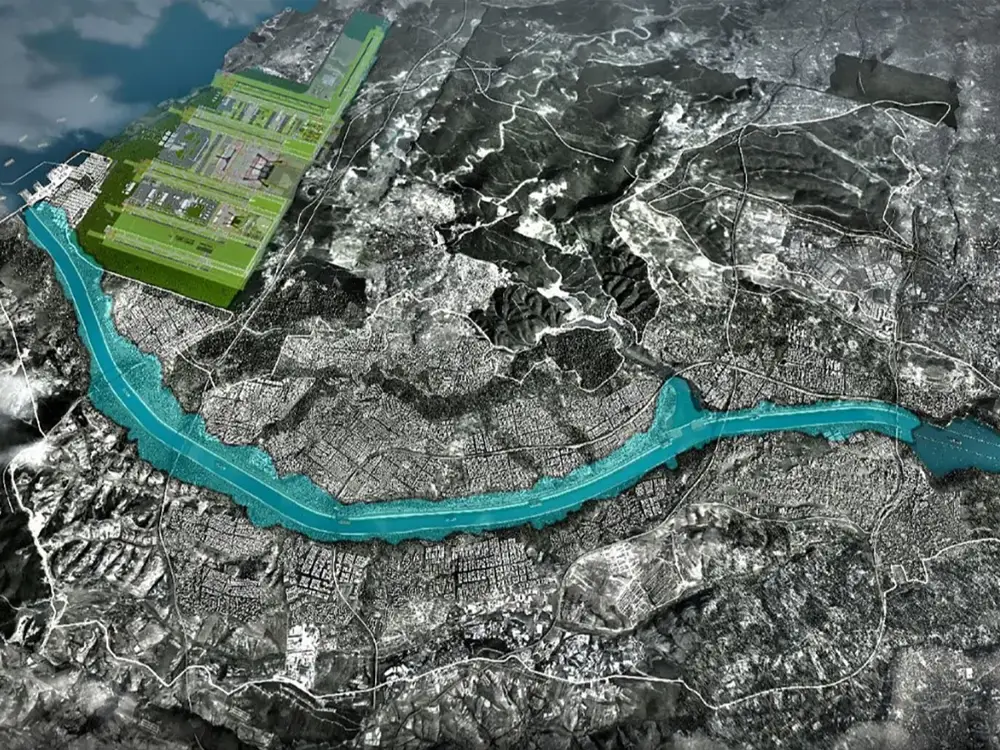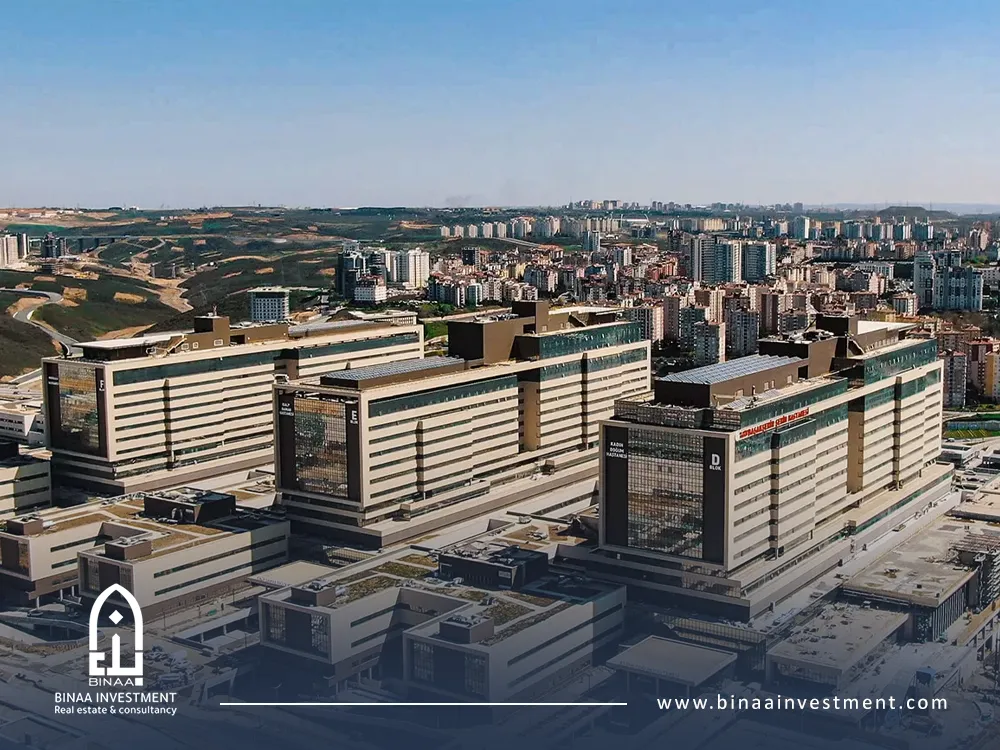The Bosphorus Bridge is more than just a structure. It's a symbol of connection, a marvel of engineering, and an iconic Istanbul landmark.
Spanning the Bosphorus strait, this suspension bridge links Europe and Asia. Completed in 1973, it was the first of its kind to bridge these two continents.
But the Bosphorus Bridge is not just about its past. It continues to play a vital role in modern Istanbul. It facilitates trade, eases transportation, and even hosts the unique Istanbul Marathon.
This article will take you on a journey through the history of the Bosphorus Bridge. We'll explore its design, construction, and the challenges faced during its creation.
We'll also delve into its significance in Istanbul's urban development and its role in cultural and sporting events. Finally, we'll touch upon the third Bosphorus bridge, expanding the horizons of this fascinating story.
Join us as we explore the iconic Bosphorus Bridge and its enduring impact on Istanbul and beyond.
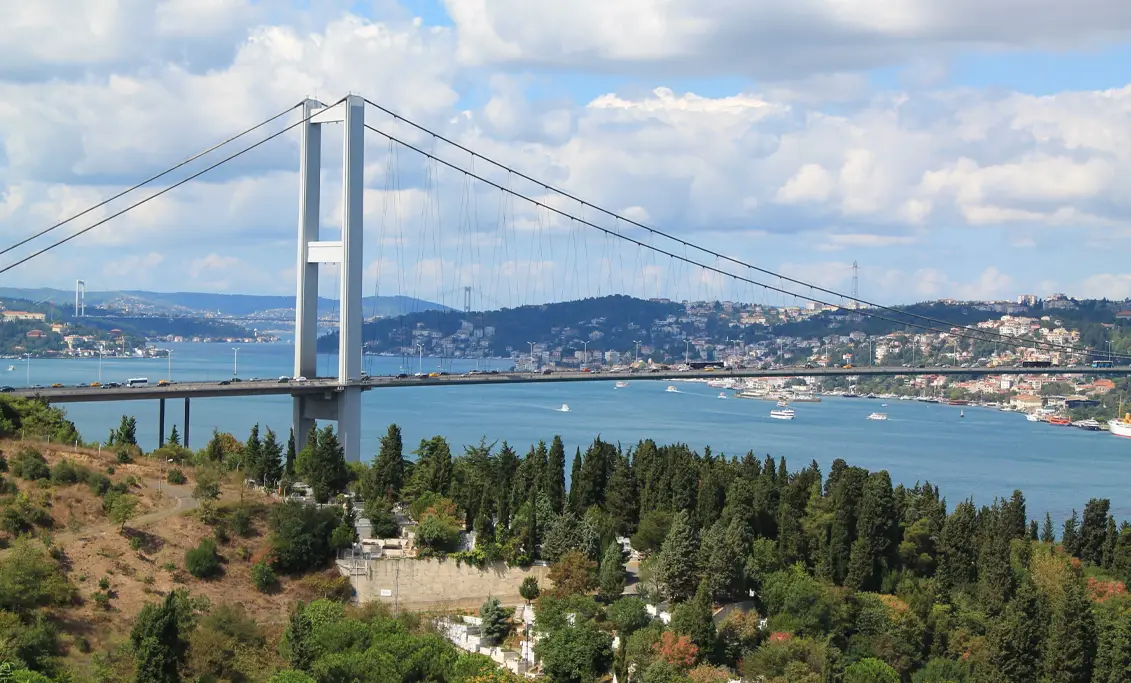
The Bosphorus Bridge: A Symbol of Connection
The Bosphorus Bridge serves as a powerful symbol of unity. By connecting two continents, it facilitates the blending of cultures and ideas. This unique aspect makes it stand out among other bridges in Istanbul.
Beyond its symbolic importance, the Bosphorus Bridge plays a critical role in daily life. It serves thousands of commuters each day, making it a vital artery in Istanbul’s transportation network. Its three lanes of traffic in each direction are perpetually busy.
The bridge also offers a unique experience for pedestrians and cyclists. Walking across the bridge provides stunning views of the Bosphorus and the vibrant cityscape of Istanbul. This pedestrian access allows for leisurely exploration and breathtaking photography.
Since its completion in 1973, the bridge has become an integral part of the city's identity. It reflects the spirit of innovation and determination that defined its construction era. The bridge’s significance continues to evolve as Istanbul grows.
In modern times, the Bosphorus Bridge symbolizes more than mere infrastructure. It is a testament to human achievement, bridging geographical divides and connecting people's daily lives. Its continued operation highlights its role in fostering connectivity and understanding.
The Architectural Marvel of the Bosphorus Bridge
The Bosphorus Bridge is an exceptional example of engineering prowess. Its design marries functionality with aesthetic grace. As a suspension bridge, it redefines architectural possibilities.
The bridge's sleek profile and impressive dimensions captivate onlookers. Stretching 1,560 meters, it elegantly spans the Bosphorus strait. This design allows for unobstructed views and ship passage below.
A balance of form and strength defines its construction. Steel and concrete materials ensure it withstands the elements. These choices were crucial for the bridge’s long-term durability.
Its deck is a blend of cutting-edge technology and strategic planning. Orthotropic steel deck construction minimizes the bridge’s weight without compromising stability. This innovation was at the forefront during its time.
The Bosphorus Bridge also adapts to natural forces gracefully. Its thoughtful design accommodates temperature changes, wind, and seismic activity. Engineers crafted solutions to address these challenges, ensuring safety.
Design and Construction: Bridging Continents
Designing the Bosphorus Bridge was no small feat. It required precise calculations and visionary ideas. British firm Freeman Fox & Partners rose to the occasion.
Construction involved global collaboration. Turkish, German, and Swedish companies joined forces to bring the design to life. This teamwork reflects an international engineering triumph.
Work on the bridge began in the early 1970s. It took three years to complete this remarkable structure. Challenges were numerous, from deep waters to strong currents.
Innovative techniques were employed throughout the process. Builders used state-of-the-art technologies for accuracy and efficiency. These efforts culminated in a bridge that still impresses today.
The Bosphorus Bridge, also called the 15 July Martyrs Bridge, is a suspension bridge. It connects the European and Asian sides of Istanbul, Turkey. It spans the Bosphorus Strait and was completed in 1973.
The total length of the Bosphorus Bridge is 1,560 meters (5,213 feet), making it one of the longest suspension bridges in the world.
The Bosphorus Bridge connects Europe and Asia. It is important for Istanbul's transportation system. It helps with daily commutes and international trade.
The Bosphorus Bridge hosts many events. One of them is the Istanbul Marathon. This marathon is special because it crosses two continents. The bridge also hosts cultural festivals and celebrations.
No, there is no entrance fee to walk across the Bosphorus Bridge, making it an accessible attraction for everyone.
The Towers and Cables: Engineering Triumphs
The Bosphorus Bridge’s towers stand as towering triumphs. Rising 165 meters, they dominate the Istanbul skyline. Their construction used a climbing formwork system.
These robust towers anchor the bridge’s intricate network of cables. High-strength steel wire forms the basis of this system. Each cable supports the massive structure above.
The cables are meticulously arranged to withstand stress. They are a marvel of tensile strength and precision. This design ensures the bridge accommodates massive loads daily.
Underneath, 165 pairs of vertical hangers connect the deck. These components work tirelessly to maintain stability. Together, they form a symphony of engineering brilliance that secures the bridge’s longevity.
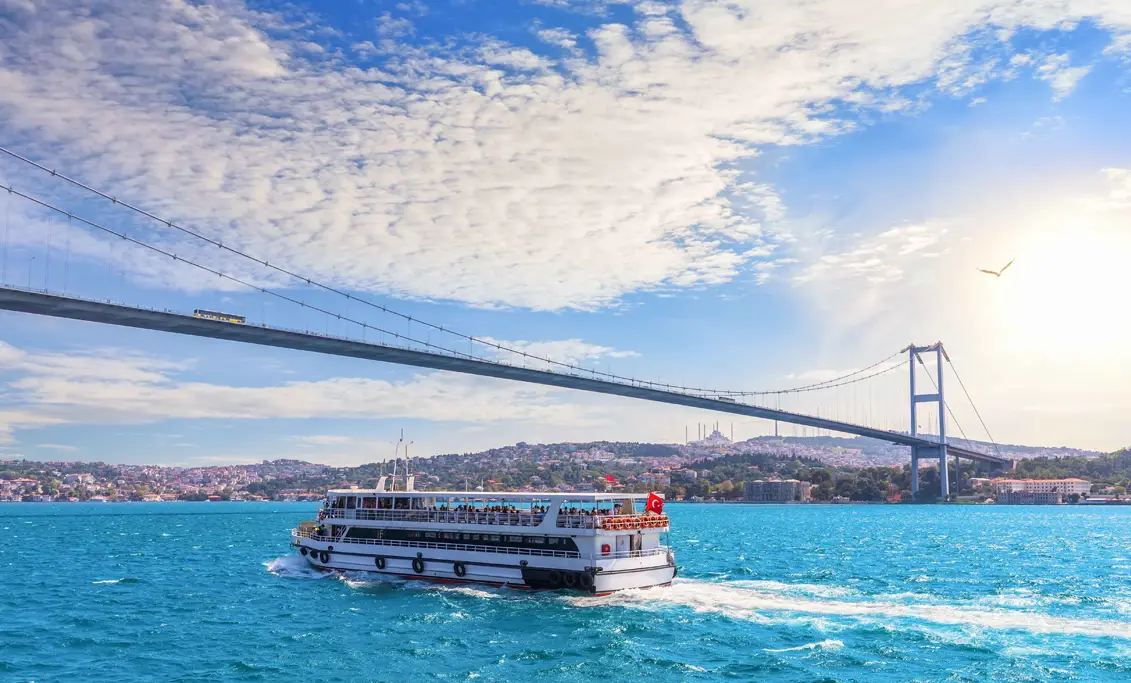
The Historical Significance of the Bosphorus Bridge
The Bosphorus Bridge holds immense historical significance as a symbol of Turkey's modernization. Completed in 1973, it was the first bridge to connect the continents of Europe and Asia directly. This achievement marked a new era in Turkish infrastructure, showcasing the country's technological progress.
The bridge's construction was more than a feat of engineering; it was a national pride project. It was praised for improving connections between both sides of Istanbul. This helped boost economic growth and unity. The bridge contributed significantly to easing traffic and improving transport efficiency.
Over the years, the Bosphorus Bridge has witnessed numerous historical events, including demonstrations and gatherings. It played a pivotal role during the 2016 coup attempt, further embedding itself in Turkey's historical narrative. The bridge's ability to stand firm in times of tension reflects its strength and symbolic presence.
Today, the Bosphorus Bridge remains a vital transport artery. It carries millions of people daily and has become an enduring symbol of unity and progress. Its role in Istanbul's history is as monumental as its structure, continually shaping the city's development and heritage.
From Inception to Renaming: A Timeline
The journey of the Bosphorus Bridge began in the 1950s with discussions on Istanbul's growing traffic needs. By 1967, the project gained momentum as the Turkish government officially commissioned its design and construction. The bridge was to become a crucial link between the continents, enhancing Istanbul's role as a global city.
Construction officially commenced in February 1970. For three years, workers and engineers faced challenges ranging from deep waters to unpredictable weather. By October 30, 1973, the bridge was finished and opened with great celebration. This event matched Turkey's 50th Republic Day festivities.
Originally simply known as the Bosphorus Bridge, this iconic structure underwent a significant renaming in 2016. Following the thwarted coup attempt, it was renamed the 15 July Martyrs Bridge. This change honored those who defended democracy, further anchoring the bridge's legacy in Turkish history.
The bridge's renaming was a pivotal moment, symbolizing resilience and unity in the face of adversity. It stands today as proof of Turkey's strong spirit. Each span and cable tells a story of ambition, progress, and resilience.
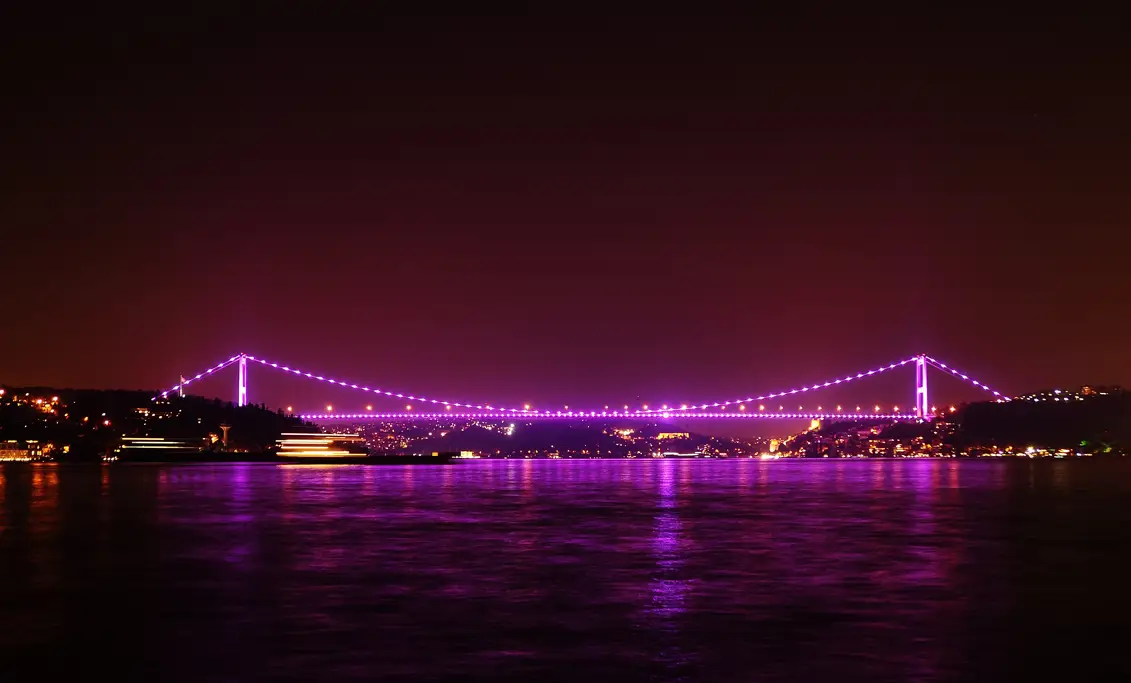
The Bosphorus Bridge in Modern Istanbul
Today, the Bosphorus Bridge is integral to Istanbul's rapid pace of life. It's a bustling artery connecting two continents, heavily relied upon by commuters and tourists. The bridge facilitates the movement of countless vehicles each day, underlining its vital role in urban transport.
The visual impact of the bridge at night is spectacular. Its striking LED light show, capable of displaying 16 million colors, is a modern marvel. This lighting not only illuminates the bridge but also enhances the city's skyline.
The Bosphorus Bridge plays a prominent role in urban planning. It shaped the development of areas surrounding the Bosphorus, influencing housing, commerce, and industry. Its presence encourages businesses, adding dynamism to Istanbul's economy.
Continual maintenance ensures the bridge’s longevity and safety. With modern technologies and diligent oversight, the bridge remains as robust and reliable today as it was decades ago. Its importance to Istanbul’s infrastructure cannot be overstated.
Economic Impact and Urban Development
The Bosphorus Bridge has dramatically affected Istanbul's economy. By enhancing connectivity, it facilitates efficient trade and transport across the city. This link between continents supports economic growth by fostering business activities and commerce.
Urban development around the bridge has transformed Istanbul. High-quality infrastructure drew businesses and residential developments to previously less accessible areas. Such growth boosted property values and spurred economic vitality.
The bridge's influence extends to broader city planning as it alleviates congestion and improves accessibility. As a result, it is a key part of Istanbul's urban development plans. These plans adapt to the city's growing needs.
Cultural and Sporting Events at the Bridge
The Bosphorus Bridge is more than just a transport route; it's a vibrant cultural hub. It often hosts events that celebrate Turkish culture, contributing to the city's rich tapestry. These gatherings highlight the bridge’s role as a focal point for community activities.
One of the most notable events is the Istanbul Marathon. It’s the only marathon in the world that spans two continents. This event attracts participants globally, emphasizing the bridge's unique geographic significance.
The bridge is a backdrop for various artistic expressions, including festivals and performances. These events show its flexible nature. They connect culture and geography. They also highlight its ongoing importance in local and global settings.
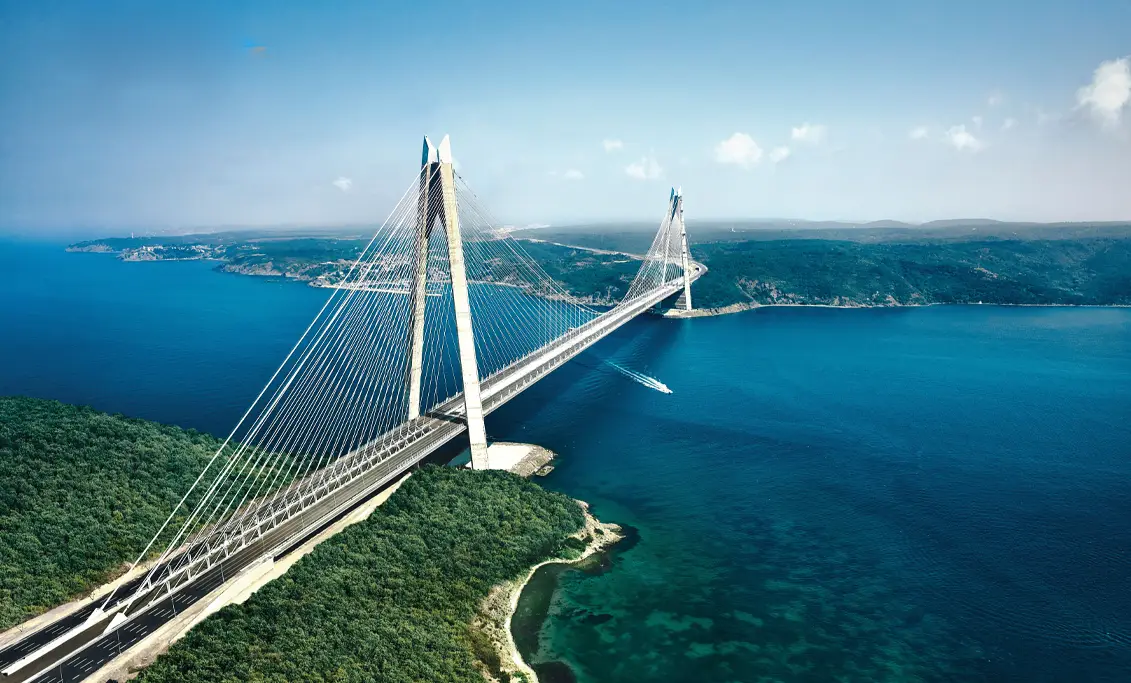
The Third Bosphorus Bridge: Expanding Horizons
The third Bosphorus bridge, named Yavuz Sultan Selim Bridge, represents a new chapter in Turkey's infrastructure legacy. Completed in 2016, it stretches across the Bosphorus Strait with elegance and strength. This bridge is part of the Northern Marmara Motorway, a significant project enhancing Turkey's transportation grid.
Designed to alleviate traffic on the other bridges in Istanbul, the Yavuz Sultan Selim Bridge plays a critical role. It's the widest suspension bridge in the world, catering to both road and rail traffic, marking a feat of engineering prowess.
The bridge's strategic location connects Istanbul's less developed northern regions, fostering economic opportunities. It acts as a key link in regional trade routes, enhancing the city’s accessibility to international logistics. As such, it remains pivotal to Istanbul's economic landscape.
The bridge offers an alternative route that helps reduce congestion in the city center. This expansion allows for smoother transit of goods and people, linking various parts of Istanbul more effectively.
Yavuz Sultan Selim Bridge: A New Era
The Yavuz Sultan Selim Bridge stands as a modern marvel on the Bosphorus. Named after an Ottoman Sultan, it symbolizes Turkey's ambition and engineering excellence. Its construction showcases the country's commitment to enhancing its infrastructure.
This bridge spans a total length of 2,164 meters, with its main span reaching an impressive 1,408 meters. Such dimensions illustrate its capability to accommodate substantial traffic flows, including heavy goods vehicles, without hassle. It sets a standard for future urban transit solutions.
The design of the Yavuz Sultan Selim Bridge is an architectural masterpiece. Blending functionality and aesthetics, the suspension bridge incorporates both road and rail lines. This dual utility reflects innovative thinking in addressing urban transit challenges.
As Istanbul continues to grow, the bridge facilitates connections, linking industrial hubs and residential regions. Its presence improves logistics and makes life better for residents and visitors. This signals a new era of transportation.
Visiting the Bosphorus Bridge: Tips for Tourists
Exploring the Bosphorus Bridge offers tourists an unforgettable experience of merging tradition and modernity. Walking across the bridge allows visitors to literally step between two continents. Plan your visit during quieter times for a more leisurely stroll.
While crossing, take in the stunning views of Istanbul's skyline and surrounding waters. Remember that the bridge is illuminated at night with an impressive LED display. This gives you a completely different perspective than during daylight.
Pedestrians and cyclists can enjoy the bridge without charge, making it accessible for everyone. For a unique experience, consider visiting during the Istanbul Marathon, when the bridge becomes an exclusive running path.
Best Views and Photo Opportunities
Capturing the Bosphorus Bridge at dusk reveals breathtaking beauty, with city lights glistening. Head to nearby Üsküdar or Ortaköy for iconic photo angles.
Choose a clear day to fully appreciate the panoramic view of the Bosphorus, enhancing your photographic journey.
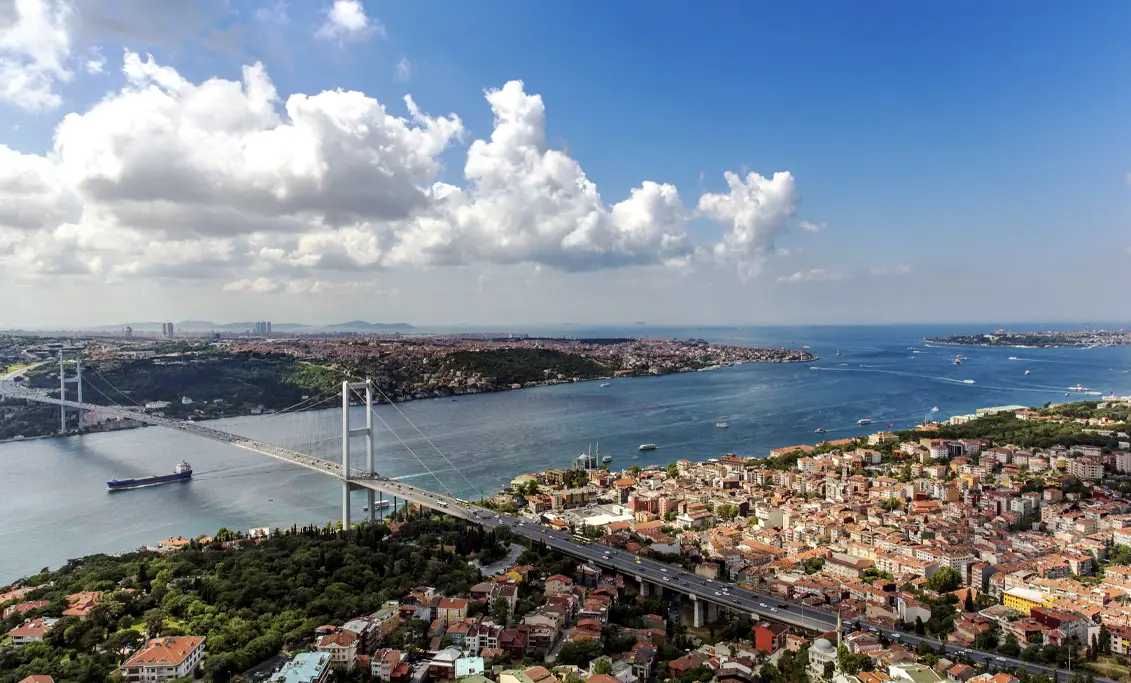
The Bosphorus Bridge as an Istanbul Landmark
The Bosphorus Bridge stands as a testament to Istanbul's rich history and future ambitions. As a connection between East and West, it embodies unity and advancement. Its role in promoting Istanbul's economic growth and cultural pride cannot be overstated.
Beyond its practicality, the bridge has become a beloved symbol for locals and visitors alike. It showcases engineering prowess while offering a scenic backdrop that has inspired countless artistic endeavors. The views it provides remain unparalleled, making it a must-visit spot for any traveler.
Ultimately, the bridge is more than just infrastructure. It represents the spirit of Istanbul, blending timeless elegance with dynamic progress.

